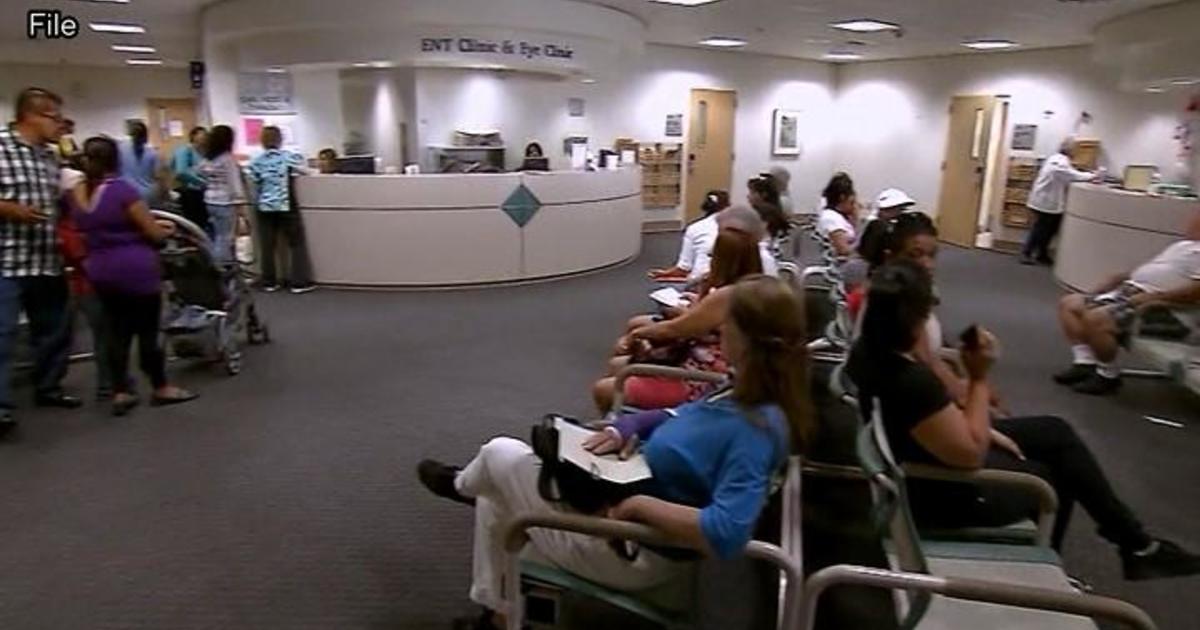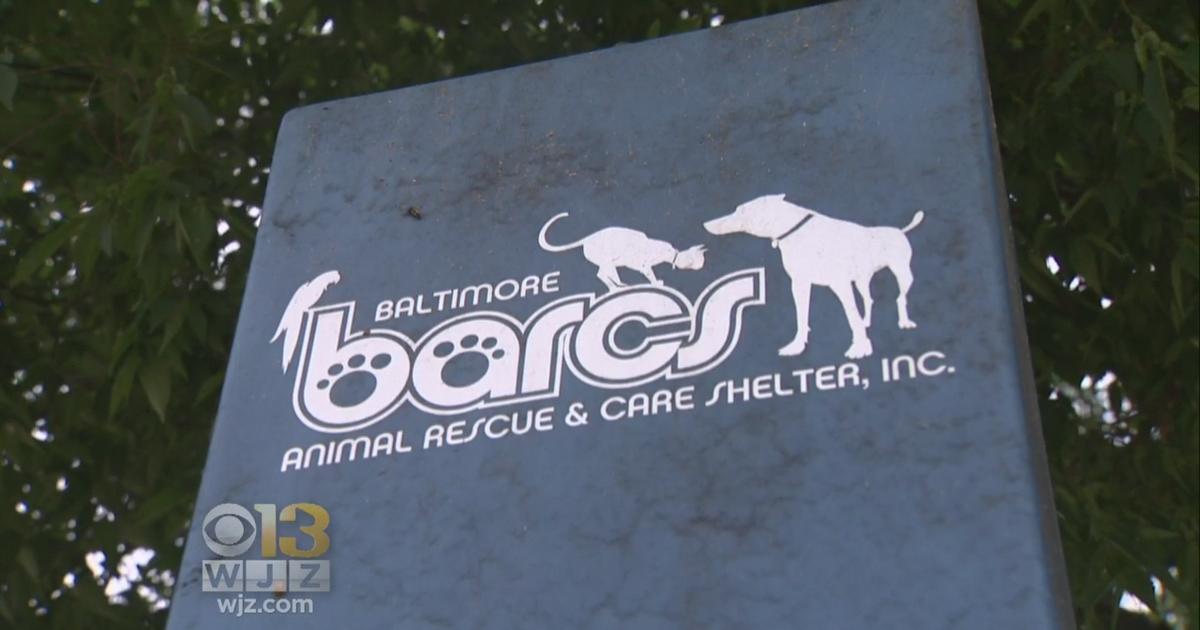Coronavirus Ask A Doc: How Do You Know If You Have COVID-19 And Need To Get Tested?
BALTIMORE (WJZ) -- As cases of COVID-19, more commonly known as coronavirus, continue to rise here in Maryland and around the U.S., WJZ's Denise Koch spoke to a local doctor about the virus and what we need to know to stay healthy and informed.
Dr. Matthew Poffenroth is the Chief Clinical Officer for LifeBridge Health. He tells us what coronavirus is and where it came from, why it's still considered more deadly than the flu and how you know if you should get tested.
>> For WJZ's complete coverage on coronavirus click here <<
Here's a transcription of the interview which you can watch above. It has been edited for clarity and length.
Denise Koch: What is coronavirus and where did it come from?
Dr. Matthew Poffenroth: What we know about the coronavirus is that it's a type of virus [there are many viruses in the world, some the commonly cause the cold, influenza, all that kind of stuff ]; coronavirus is a group of viruses that can cause respiratory infections in humans. Most of coronavirus strains are in animal reservoirs and normally don't infect humans. The strain called COVID-19 originated in China in late 2019 and they think the original case happened from a someone who was at an animal market and somehow the virus "jumped" [I'm saying that symbolically] from the animal to a person and it started spreading from there.
DK: And that's why we never have seen it before, because it came from an animal?
Doc: It's similar to how several years ago there was SARS and Avian flu; these sometimes pop up and then go away and we never hear of them again. We don't know that this will be the case with COVID-19. It may come, peak, go away and then recycle on an annual basis. Our hope there is once we do start seeing the incidents go down -- we're nowhere near that, it's on the rise internationally and here in the United States -- we do hope when it starts to settle down and eventually go away, if there's a seasonal reoccurrence, we'll have a vaccination ready or be close to having a vaccination ready.
DK: People keep saying there are other viruses each year that kill people, why is this one so much more frightening?
Doc: There are two things about COVID-19 that make it more frightening. The last big pandemic was in 1918 with the influenza. Several million people around the world died. The healthcare system was obviously different-- it was 100 years ago -- we care for people much better now.
The mortality rate of influenza versus COVID-19: Influenza has a mortality rate of about 1%. So in about every 100 people that get the flu, one dies. The vast majority that die are those that are elderly and have underlying medical conditions. With COVID-19, we don't know exactly what the incidents rate is yet because we don't know how many people are actually walking around with it. We haven't even diagnosed everyone yet, because either they don't have symptoms or we haven't tested them. But we think, the worst case scenario, of the people who have tested positive, the mortality rate is in the 2-3% range. So right there -- it's about 3x as lethal as the flu. But it's still low -- and the people that are dying are still the elderly. There's very few cases in children, even when you look at China, only a handful of children have been hospitalized. Most children, we don't think, show symptoms.
The second thing that makes it more deadly than influenza is that there's no vaccine. Everybody should be getting their influenza vaccination every year. It's not perfect, but it protects two-thirds of us, so that creates this herd immunity, which prevents us from passing it along to each other. We don't have that in place with the coronavirus yet.
DK: There's a lot of paranoia out there. How should a person know whether they should get tested? They may just have a cold or maybe the flu. How do they know when they should call their doctor and how do they get this test?
Doc: Before I answer those questions, I do want to comment a bit on the paranoia factor. At this point we don't know what's going to happen with this. We're all preparing for the worst. Worst case scenario is -- if this is like 100 years ago what we saw with influenza -- there's pretty rapid spread over the next month or so. And again 80% of people have very mild symptoms, 20% of people will be more symptomatic and the elderly population is at risk. So there could be several thousands of patients who could end up needing hospital care. That's the fear, that's what we're trying to prepare ourselves against. We have to keep this in perspective, the 80% that are infected with this -- it'll be like a cold or flu, for kids -- they're not that ill. Why are we closing schools? It's not to protect our children, it's to protect their grandmas and grandpas. The [social distancing] is all about preventing the spread.
The paranoia about this is what leads to there being no toilet paper on the shelves; it's like Snowmaggedon coming again. My personal concern as a physician is we're going to see more health issues due to the psychological impact and the anxiety, stock market impact, fears over how effective our leadership is and it's leading to some really worrisome and scary behavior. I would really challenge us all to take a deep breath. For the most part, most of us are safe. But as we start testing more people, there will most likely be thousands of cases identified across the country, even here in Maryland.
As for testing -- if you have no symptoms or if you feel feverish and have a cough, first thing is you should go home and call your primary care physician. Do not go to the emergency room. Do not go to the urgent care center. If you are very ill, you're huffing and puffing and can't catch your breath and are lightheaded, absolutely go to the emergency room or call 911. But if you're not feeling critically ill, go home, don't be around other people, call your PCP. They should be able to give you the right advice, if you're truly at risk or not. And if you are, they'll tell you what to do so you can get tested.
DK: What does the test involve? Do they take blood?
Doc: This is changing daily, but up until recently, it was two swabs taken, one in your nose and one of your throat. Now it looks like we have pretty reliable testing with a single swab. Initially, the CDC wanted to control testing, so every sample was sent to Atlanta, but then it was opened up to each state health department, so now Maryland is doing its own testing. Now the commercial laboratories are able to do tests. Now testing kits are getting out to the physician's offices to the emergency rooms. But, not everybody needs to get tested.
What we're doing at LifeBridge is if you have a fever or cough, we have a centralized teletriage, or a virtual visit, where we can have that patient call and speak to a nurse, go through a list of questions, and see how symptomatic they are and if we really think it's warranted. If we then feel like they require a test, we've set up a couple of different testing sites -- one at Carroll Hospital Center and one at Sinai Hospital. People can essential drive up, get tested, be allowed to go home and be contacted back in 24 to 48 hours with their results.
Right now it's taken three days for the test results to come back; new tests are coming out, just heard that Hopkins may have developed one that you can get results within four hours. That's not out there yet, but that's what's coming.
DK: Even if you take a coronavirus test or test positive that doesn't mean the virus will make you critically ill?
Doc: We've all had bad colds. Many of us have had the flu. If you've got the virus and you're relatively healthy, clinically stable, what we're going to advise you to do is stay at home. Don't let your family members around you, you'll quarantine at home. We know now the incubation period, meaning the time from when you are exposed (when the virus enters your body) to when you start showing symptoms is now narrowed down to probably 5 to 7 days. [Originally it was 12 to 14 days]. It could still be 12 to 14 days for some people. When we tell you to stay at home, that's why it's for a 14-day period of self-quarantine. Because we're waiting to see if symptoms develop. If after 14 days you haven't had any symptoms, you're clearly not infected, you can go back into your normal life.
If you start showing symptoms during quarantine and test positive, the illness will last anywhere from 4 to 7 to 9 days depending on the person. So the next thing we don't know. We used to think you were infectious when you were symptomatic, but now we think you're still infectious for some period of time after you have it. We used to think it was up to two weeks, but it could be even longer than that. Patients that test positive and are symptomatic, before they are released from home quarantine, they are getting re-tested for the virus. This time it's a blood test to see if the virus is still in your system. Once we see the virus is gone, then you're released.
DK: Are there any simple tips you can tell people to help prevent the spread?
Doc: First and foremost, use common sense. If you're feeling sick, if you're coughing, don't go to the grocery store, don't go to the gym -- just call your doc and get their advice. Most likely you got a cold, but use common sense.
Absolutely wash your hands, for sure. Use good hygiene as far as coughing [cough into your elbow/sleeve].
The whole social distancing, avoiding large crowds, that's a smart thing to do. We would absolutely encourage that.
Last thing to emphasize, be mindful of our elderly population. They are the ones who at risk. For goodness sakes, take care of your parents, grandparents. If they live by themselves, bring them to you, get them food so they don't have to go out.
At some point we'll probably get a new shot for this every year.
For the latest information on coronavirus go to the Maryland Health Department's website or call 211. You can find all of WJZ's coverage on coronavirus in Maryland here.



